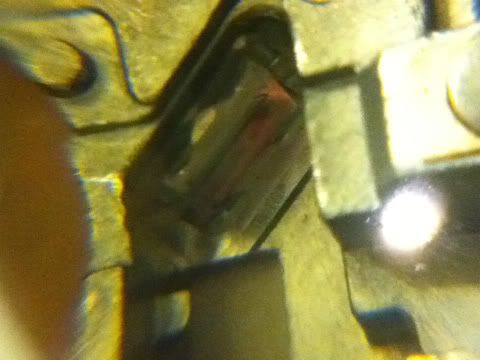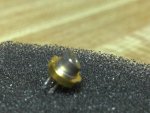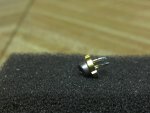- Joined
- Apr 26, 2010
- Messages
- 4,175
- Points
- 83
I've opened up quite a few drives, and taken a peak at quite a few sleds. However tonight, after a sudden urge to open an old T0$h1ba SD-M1212 DVD ROM that I gutted (along with various wiring, a PSU, a fan, and an enormous heatsink) from a dilapidated computer that we were getting rid of, I found at least half a dozen oddball things, borderline new discovery. The first odd thing, was TWO diodes. This was new to me, I was used to ROMs carrying simply an IR diode, I then checked the face-plate, sure enough, ROM. I checked further, a warning specified a visible laser, and an invisible laser. So one of these is a red diode, and that's good news (even if it's 5mW, you'll understand why a little later on.) Further peaking lead to the most bizarre setup I've seen for a diode. No orange wiring to PCB or anything, one diode was soldered directly to the PCB. Another oddity? Neither diode has/had the optics assembly/array commonly linked to IR diodes within ROMS and writables. On top of that, I found a distinctively "weird" can design, a very odd circular lens assembly, and this sled is one of the most lacking in the lens department, that I have ever seen (a total of 5, including the cubes, outside lenses, everything.) I've taken over a dozen pics of this sled and it's contents, I will be posting them tomorrow with a description of each, and a bit of a more thorough "write-up" when I have a little more motivation (very sleepy.) So for now, consider this a "teaser" I'll update tomorrow with everything else. Sleep tight fellas, more to come!
Last edited:

























